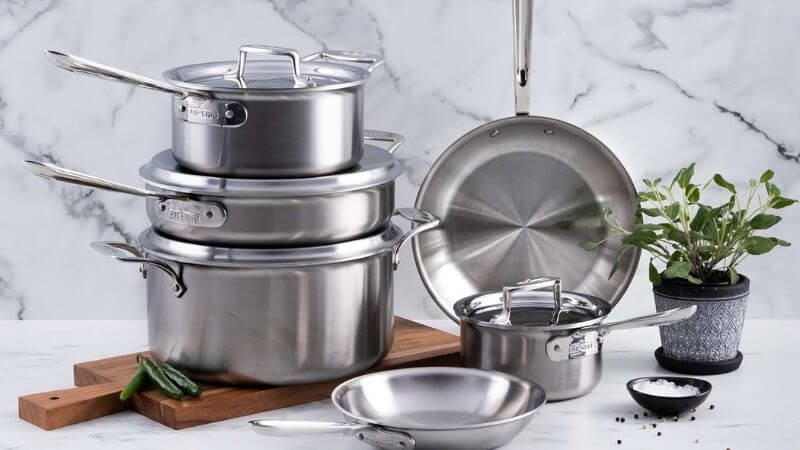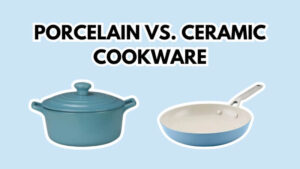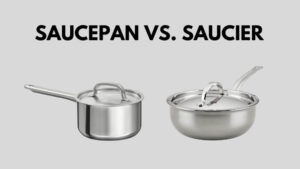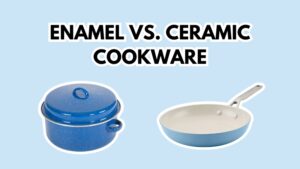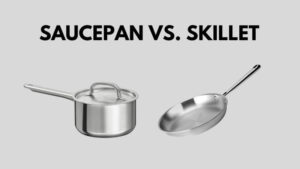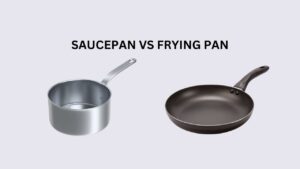When it comes to cookware, stainless steel is often the preferred choice. However, not all stainless steel cookware is created equal, and one of the key differences lies in the number of layers or “plies” used in its construction.
Usually, you will have to choose between 3 ply vs 5 ply stainless steel cookware. To make a choice you will not regret, it is important to know the key differences. Let’s take a close look at how 3 ply and 5 ply pots and pans stack up.
What is Cladded or Ply Stainless Steel Cookware?
Cladded or ply stainless steel cookware refers to pots and pans made using multiple layers of metal bonded together to enhance performance. Unlike single-layer cookware, cladded designs combine the best properties of different metals, ensuring the best cooking results. “Ply” represents the number of layers used.
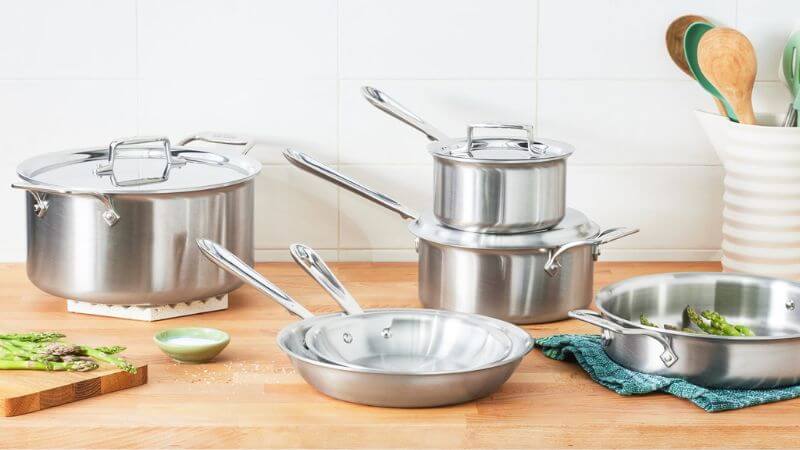
What is 3 ply?
Also called tri-ply, it is when 3 layers of metal are used in a stainless steel pan or pot. A core of heat-conductive material like aluminum or copper is typically sandwiched between stainless steel. This combination of layers provides a balance of durability, heat efficiency, and compatibility, making 3 ply cookware a reliable choice for everyday cooking. It is often favored by those who want high-quality cookware without the added weight or cost of more complex designs like 5 ply or 7 ply.
What is 5 ply?
5-ply cookware is constructed with five bonded layers of metal, typically including a core of heat-conductive material, such as aluminum or copper, sandwiched between stainless steel layers. The multi-layered design of 5 ply pots and pans offers a balance of heat responsiveness and heat retention, making it ideal for techniques like searing, slow cooking, and sauces. It also makes the pots and pans sturdier and more resistant to warping over time.
Stainless steel 3 ply vs 5 ply cookware
Even heating
Both 3 ply and 5 ply cookware offer excellent heat distribution, but the additional layers in 5 ply cookware provides an edge. They allow for more even heat conduction across the cooking surface, which is particularly beneficial for precision cooking and recipes requiring consistent temperatures. Though 3 ply stainless steel cookware pales in comparison, it still delivers reliable heat distribution and is sufficient for most everyday cooking tasks.
While the number of layers plays an important role, more layers won’t improve performance unless the overall thickness increases, as seen in comparisons like aluminum vs stainless steel cookware.
Weight
When it comes to weight, 3 ply cookware is lighter and easier to handle. So, for those who tend to get hand and wrist strain, it is the better choice. Its ease of handling also makes it suitable for beginners or those new to stainless steel cookware or cooking as a whole. 3 ply cookware is particularly useful when dealing with larger pots and pans or when frequent movement of cookware is needed. In contrast, 5 ply cookware is significantly heavier due to its multi-layered construction, which can be difficult to handle for some.
Thickness
The number of layers directly affects the thickness of the cookware. Therefore, 3 ply cookware is thinner than 5 ply cookware. The number of layers in cookware has important implications. First, thinner cookware generally heats up quickly but does not retain heat as effectively as 5 ply cookware. Second, it is more vulnerable to damage, such as denting and warping. 5 ply cookware does not encounter these drawbacks, but it is heavier and bulkier, which may be less convenient for some users.
Durability
For durability, 5 ply cookware is the more durable choice. Its additional layers make it more resistant to scratching, warping, and denting, making it better suited for heavy-duty use. While 3 ply cookware is durable enough for regular home use, it may not withstand as much wear and tear over time as its 5 ply counterpart. That being said, if you are looking for cookware that can hold up well under constant or intensive cooking conditions, 5 ply is the way to go. For everyday cooking tasks like sautéing, frying, and simmering, 3 ply cookware is sufficient.
Price
Price is one of the key factors that differentiate 3-ply from 5-ply stainless steel cookware. 3 ply is generally more affordable. So, it is a good choice for budget-conscious buyers who still want quality cookware. Unlike 3 ply options, 5 ply comes with a higher price tag due to its advanced performance. While it is an investment, it is often worth it for those seeking long-lasting cookware.
User Experiences
Most people cooking at home find 3 ply stainless steel cookware practical for everyday meals. The lighter weight makes it easy to maneuver, even when cooking larger dishes. Heat distribution is generally consistent, and it is perfect for tasks like sautéing, frying, or simmering. However, if you are preparing something that requires you to be precise with the temperatures or cook for long periods, such as a slow-braised stew, you might notice that 3 ply cookware does not do as good of a job as 5 ply stainless steel cookware.
5 ply cookware offers a more premium cooking experience, particularly when it comes to heat retention. In 5-ply stainless steel cookware reviews, many found that the thicker construction allows the pan to hold and distribute heat more evenly, which is fantastic when working with high-heat cooking techniques like searing. 5 ply cookware’s layers also make it more durable, so it can continue to be a reliable kitchen companion for many years. However, some might find the heavier weight of 5 ply cookware cumbersome when cooking for longer periods or when handling larger pieces.
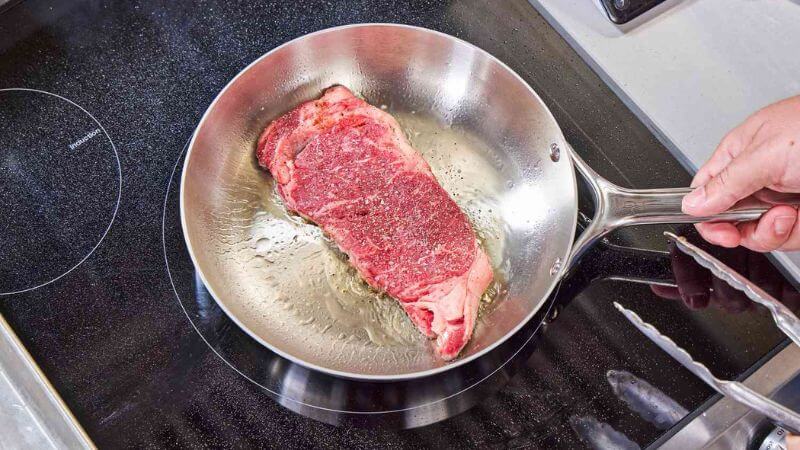
Conclusion
Both 3 ply and 5 ply cookware offer advantages, and the right 3 ply vs 5 ply stainless steel cookware choice largely depends on your cooking style and needs. If you are looking for something lightweight, budget-friendly, and perfect for everyday cooking, opt for 3 ply cookware. It provides solid performance for beginners or casual cooks.
On the other hand, if you value durability and the ability to tackle more demanding cooking tasks, 5 ply cookware is a great investment. However, you will have to be prepared to sacrifice a bit of convenience. Between stainless steel 3 ply vs 5 ply, it is heavier and bulkier. It is also important to consider your budget when making the final decision. If you are really tight on money, hold back on getting 5 ply pots and pans and go with 3 ply ones instead.

